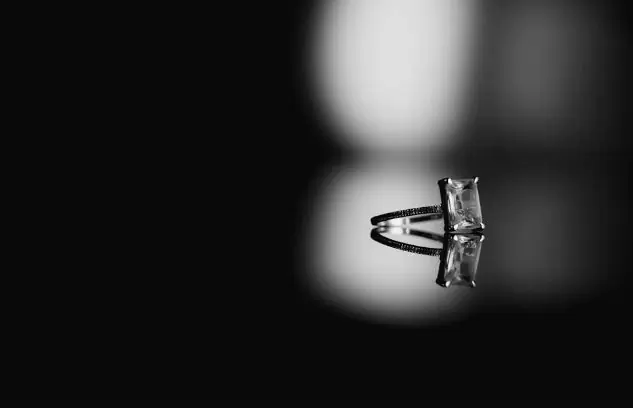How To Make A 2/3 Cup
When it comes to measuring ingredients for cooking and baking, precision is key. One of the measurements that often confuses people is 2/3 cup. This measurement is equivalent to 5⅓ fluid ounces or approximately 158 millilitres. If you don’t have a measuring cup with markings for 2/3 cups, you can use a standard liquid measuring cup and fill it up to the halfway mark twice.
To ensure you accurately measure your ingredients, it’s important to level off any dry ingredients in your measuring cups using a flat surface such as a knife or spatula. For liquids, measure at eye level and pour slowly into the measuring cup until it reaches the appropriate line.
When following recipes that call for 2/3 cup of an ingredient, measure accurately to ensure your dish turns out as intended. With these tips, you can confidently measure this tricky measurement without confusion or mistakes.
How to measure ingredients without measuring cup
- Use Your Hand: Measuring ingredients using your hand is a great way to get accurate measurements without relying on measuring cups. For example, one tablespoon is roughly the size of your thumb tip. A teaspoon is about the size of your index finger’s first joint, while half a teaspoon is as long as your pinky finger’s first joint.
- Weighing Ingredients: Another way to measure ingredients accurately without a measuring cup is by weighing them on a kitchen scale. This method works well for dry and wet ingredients like flour, sugar, milk or water that you need in precise amounts.
- Using Common Objects: You can also measure 2/3 cup using common objects around the kitchen, such as shot glasses or soup spoons. For instance, two-thirds of a cup equals approximately five and third ounces, measured with three standard shot glasses (1 ¾ oz each) or eight soup spoons (two tablespoons each).
Remember that when measuring ingredients without using measuring cups, it’s essential to use accurate proportions to not mess up your dish’s flavor or consistency!
How to convert measurements
Converting measurements can be daunting, but it doesn’t have to be. To make 2 to 3 cups of any ingredient, you must know how to convert fractions into decimals. A fraction is part of a whole number, expressed as one number over another, separated by a slash. To convert the fraction “2/3” into a decimal, divide the numerator (top number) by the denominator (bottom number). In this case, two divided by 3 equals 0.67.
Once you have converted the fraction into a decimal, you can measure your ingredients accurately. If you need to make 2/3 cup of sugar, for example, measure out 0.67 cups of sugar using measuring cups or spoons marked with fractions and decimals. You can also use an online conversion calculator if you prefer.
In conclusion, converting measurements may seem intimidating initially, but all it takes is knowing how to convert fractions into decimals and practising until it becomes second nature. Once you’ve mastered this skill, making recipes for specific measurements will become much easier and less stressful!
How to measure 2/3 cups without a measuring cup?
Measuring ingredients accurately is crucial in cooking and baking. But what do you do when you don’t have a measuring cup? Don’t worry; there are plenty of ways to measure 2/3 cups without one. One method is to use a tablespoon, which equals 1/16 cup. You will need to measure out ten tablespoons to get 2/3 cup.
Another way is using a measuring spoon set that includes the 1/3 and the 1/4 teaspoons. To get two-thirds of a cup, use four levelled tablespoons (half of a quarter-cup) or six rounded teaspoons (which equals one-third of a quarter-cup). It’s essential always to make sure your measurements are precise; otherwise, it may affect the outcome of your dish.
Lastly, if you can access kitchen scales, measuring ingredients becomes even more accurate! Two-thirds of a dry ingredient can be measured by weighing it on the kitchen scale and converting it into grams or ounces. However, this method only works for dry ingredients instead of liquid ones that require volume measurements.
How to convert measurements in cooking?
Converting measurements in cooking can be a daunting task for novice cooks. However, it’s an essential skill that every good cook should master. Converting cups to ounces or grams and vice versa can make a huge difference in the outcome of your recipe. When it comes to converting measurements, there are some basic rules that you should follow.
For example, if you need 2/3 cup of an ingredient but only have a measuring cup with 1/3 capacity, you can measure one-third of the quantity twice and add them together to get the total amount required. This technique works well for many other fractions too.
Another approach is using online conversion tools or smartphone apps, which allow users to switch between different units of measurement quickly and easily. These tools are especially useful when dealing with unfamiliar ingredients with varying densities.
Overall, converting measurements in cooking requires patience and accuracy. It’s important to keep track of the conversions made so that the final dish tastes as expected.
FAQs
How many ounces are in 2/3 cup?
There are 5.33 fluid ounces in 2/3 cup.
How many tablespoons are in 2/3 cup?
There are 10.67 tablespoons in 2/3 cup.
How many teaspoons are in 2/3 cup?
There are roughly 32 teaspoons in a 2/3 cup measurement.
Measuring ingredients is an important part of cooking and baking. Using the correct amount of each ingredient is essential to ensure your recipe turns out perfectly every time. When measuring ingredients, it’s helpful to know how much of each item you need to use for your recipe. It is where measuring conversions come into play, such as converting a measurement from cups to ounces or tablespoons to teaspoons. By familiarizing yourself with frequently asked questions about measurements, you can become more confident and accurate when preparing recipes at home.










